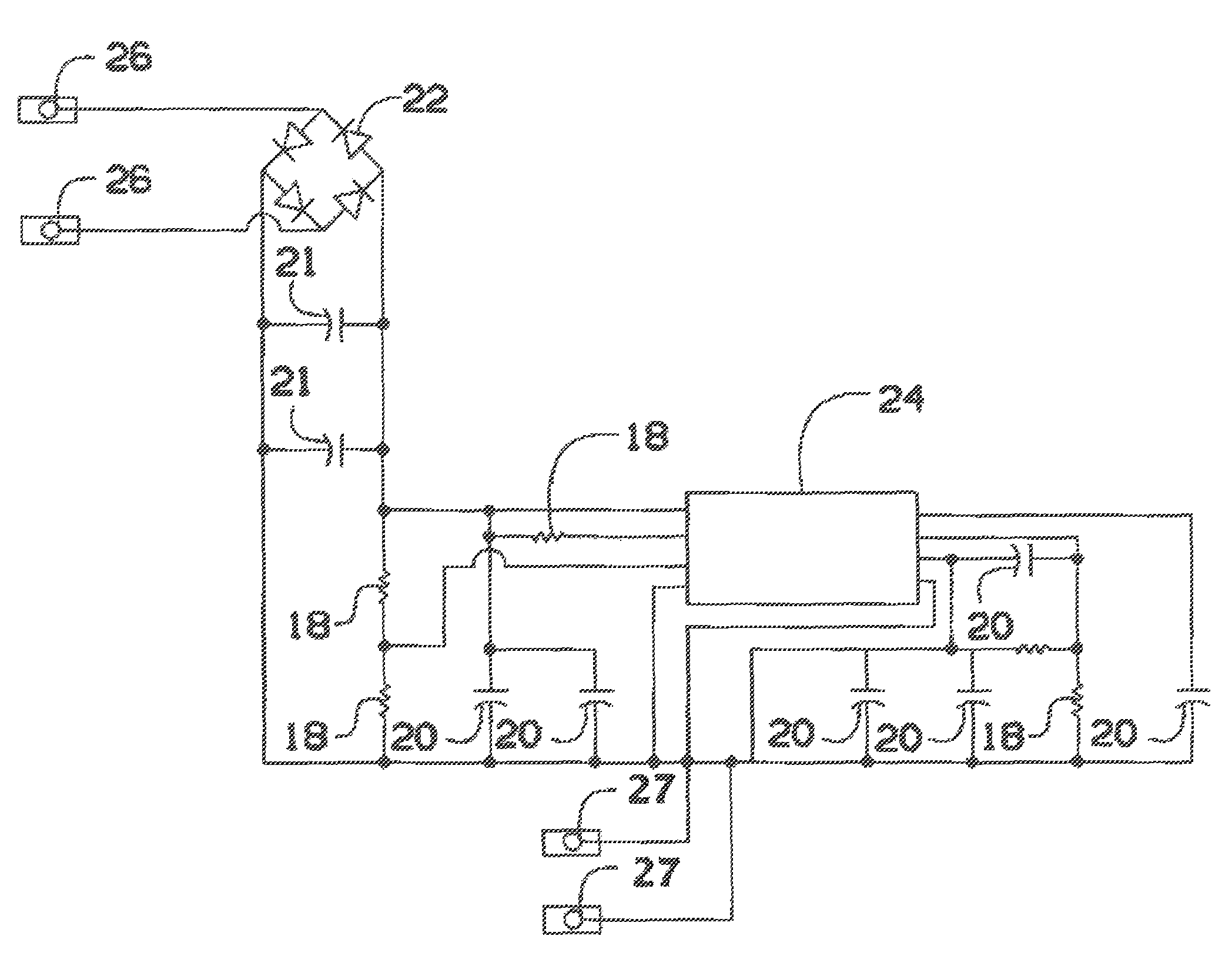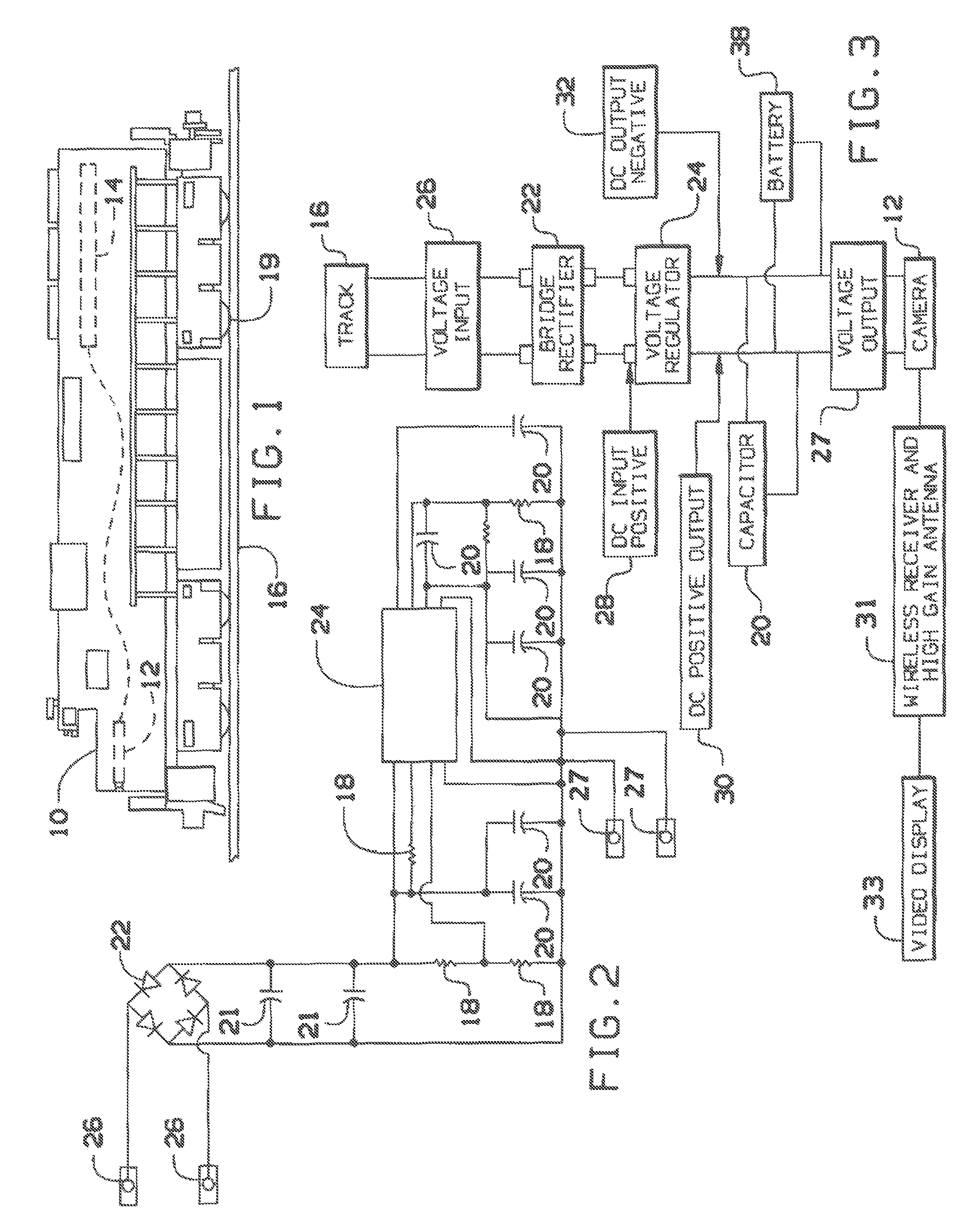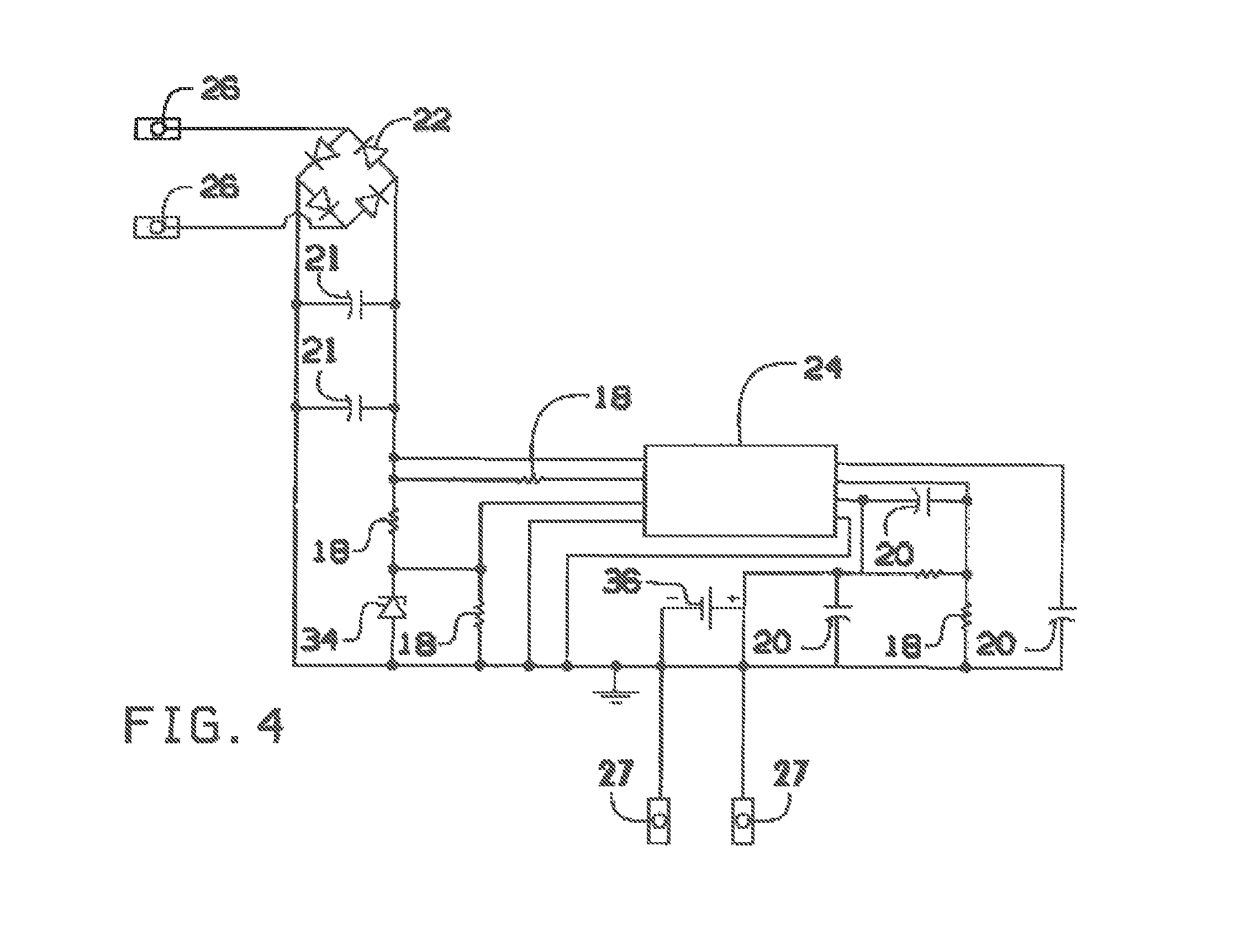Wireless video for model railroad engines providing an engineer's view
- Summary
- Abstract
- Description
- Claims
- Application Information
AI Technical Summary
Benefits of technology
Problems solved by technology
Method used
Image
Examples
Embodiment Construction
[0016]FIG. 1 shows a side view of a typical model railroad engine with the modifications of the present invention inserted. The location of camera 12 and the power supply circuit 14, illustrates one possible location depending upon the design of the engine 10. N and HO gauge engines as in FIG. 1, have one camera 12, but our power supply circuit 14 has the capability to power two or more cameras; for instance one camera pointing forward and one camera pointing backwards. In this configuration the view from the railroad engine 10 will be coming and going at the same time. As such, the power supply circuit 14 as shown in FIG. 1 was designed to minimize the footprint to afford greater flexibility for placement and positioning in the various available model railroad engine designs from different locomotive model manufacturers. The engine is supported by tracks 16 and wheels 19 conduct electrical power (either AC or DC) from the track 16 to power the power supply circuit 14
[0017]FIG. 2, o...
PUM
 Login to View More
Login to View More Abstract
Description
Claims
Application Information
 Login to View More
Login to View More - R&D
- Intellectual Property
- Life Sciences
- Materials
- Tech Scout
- Unparalleled Data Quality
- Higher Quality Content
- 60% Fewer Hallucinations
Browse by: Latest US Patents, China's latest patents, Technical Efficacy Thesaurus, Application Domain, Technology Topic, Popular Technical Reports.
© 2025 PatSnap. All rights reserved.Legal|Privacy policy|Modern Slavery Act Transparency Statement|Sitemap|About US| Contact US: help@patsnap.com



